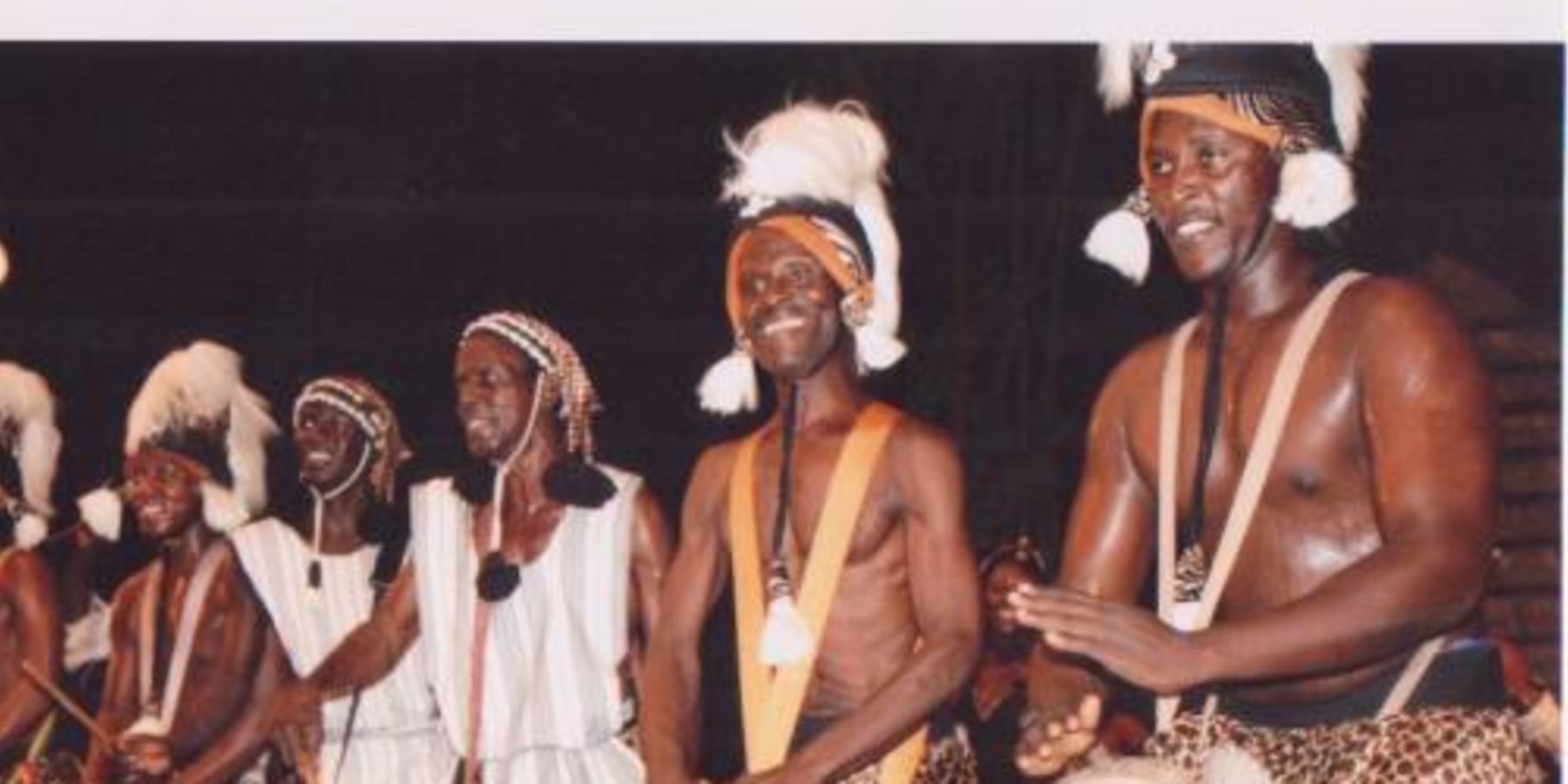
The Djembe
Guineans are a spiritual people and the djembe is held dear to their hearts. Its history can be traced back to Mali where the djembe have been used in sacred rituals for more than a millennium. When built according to traditional standards, the djembe is said to contain three spirits: the spirit of the tree in the wood of the body, the spirit of the animal in the skin of the drum head and the workmanship of the artist who made the drum. All three spirits join together in harmony to resonate an enchanting and powerful sound.
The creation of the djembe was difficult, and was undertaken only by members of the blacksmiths caste. In particular, attaching the hide to the wood is difficult, because that attachment is one of the crucial elements in the creation of sound. The artist must take care in the tanning of the hide, because of the reflection of the spirit as well as the resonance of the drum, and in choosing the wood, as the wood has to be able to burn all night in a fire. The time and effort used during the artistry of the djembe contributed the spirit of the artist to the djembe.
Traditional African drum and dance performances have long been used for the ritual rites of passage such as birth, adolescence, marriage and death as well as a number of other traditional ceremonies. During these events you are almost certain to hear djembefolas – or djembe players – lead the music as the djembe is one of the most versatile drums in Africa, producing a wide variety of sounds. Popular as ever, it can be seen all over the world today and is a fantastic symbol of African music. No other country embraces this instrument like Guinea. Nowhere else are dance and music more vibrant than in Guinea – a visit to this land is a chance to express your-self through dance and music and learn from the masters of African art.

